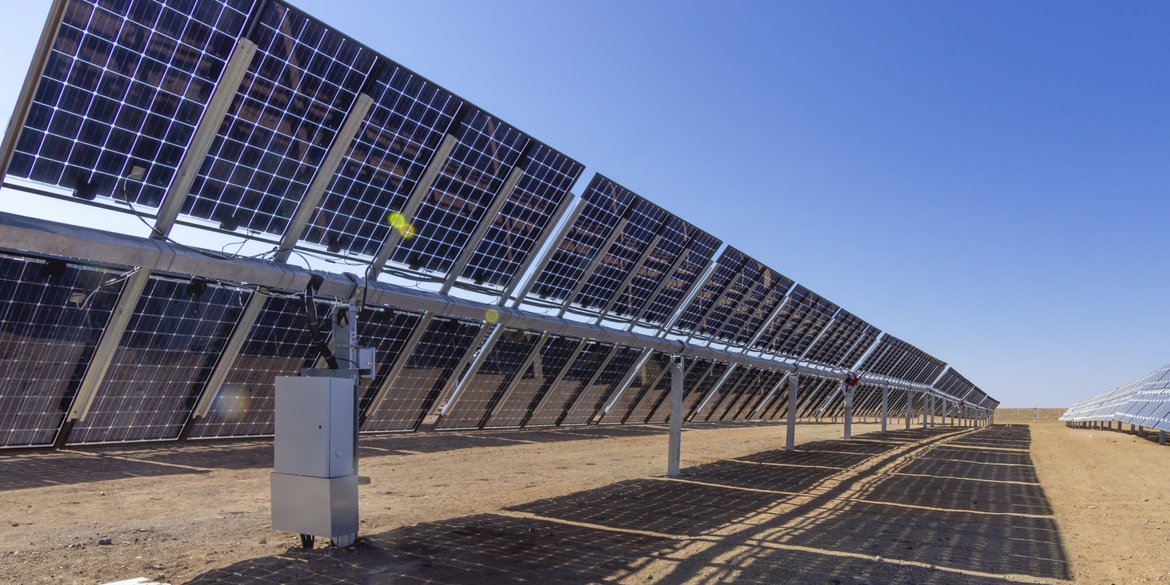According to the World Energy Outlook report by the International Energy Agency (IEA), global annual solar PV capacity growth is expected to more than quadruple in 2030 to 650 GW. Nearly 50% of the global solar capacity is slated to come from utility-scale installations. One trend that is expected to dominate new commercial and utility-scale solar PV installations is that of bifacial PV modules. A report from the International Technology Roadmap for Photovoltaics (ITRPV) projects bifacial PV panels will capture 40% of the global market share by 2028, reaching as high as 80% by 2031.
While bifacial modules hold the promise of greater economic returns—both from increased energy yields and favorable pricing—bankability and operational risk reduction are critical to future mass adoption. Widely validated, industry-trusted performance models such as those now offered with SolarAnywhere are necessary to increase investor confidence.
The economic benefits and design considerations for bifacial PV systems
Bifacial modules provide higher energy yield and economic returns than their monofacial counterparts, owing to their capability to capture sunlight from both the front and the rear sides. A validation study conducted by NREL found that energy yield for a bifacial PV system can exceed that of a standard monofacial system by as much as 6-9%. This can further vary depending on site-specific factors such as surface albedo, row-height, mounting type, ground coverage ratio (GCR), etc. For example, Kreinin et al. studied factors such as height, albedo and row spacing in bifacial PV systems and reported that optimizing design parameters can achieve gains above 40%.1 Other studies quantifying the impact of installation parameters on bifacial PV performance show that albedo and row height have a direct impact on bifacial energy output.
To understand how bifacial output changes with various PV system parameters, we conducted a sensitivity analysis of various parameters on energy output for an arbitrary fixed-tilt bifacial PV system. The system was simulated using SolarAnywhere weather data with pvlib’s open-source Infinite Sheds Bifacial model. Figure 1 shows the sensitivity of bifacial output to various input parameters. Bifaciality factor, transmission factor and shade factor applied directly to plane-of-array irradiance (POAI) leads to an effectively linear sensitivity to those parameters. As expected, the effect of surface albedo on energy production is much more pronounced for a bifacial system than for a monofacial system.
Figure 1: Sensitivity of Simulated Energy to Bifaciality, Transmission and Shade Factors and Surface Albedo
Similarly, Figure 2 shows that as relative row spacing increases, energy production for a bifacial system increases at faster rate than that of a monofacial system.
Figure 2: Sensitivity of Simulated Energy to PV Panel Configuration
A second reason for the increase in bifacial module adoption is that, over the years, the cost has decreased, making bifacial modules an economically viable option for solar installations. Improved manufacturing processes, economies of scale, and increased competition have contributed to the affordability and competitiveness of bifacial technology. In the U.S., for example, Section 201 solar tariff exemptions are expected to help drive bifacial PV adoption. As per NREL, the LCOE(USD/MWh) of bifacial systems in the United States is already competitive with monofacial systems, even with an initial cost increase of 5-6 ¢/W.
Supporting the future of bifacial PV with on-demand, pvlib Bifacial Modeling via the SolarAnywhere API
As previously noted, the ability to confidently model bifacial PV system performance is critical to mass adoption. To support this goal, SolarAnywhere users can now leverage the SolarAnywhere API to run the open-source pvlib Infinite Sheds bifacial simulation model with SolarAnywhere’s high-fidelity weather data. On-demand access to site-specific, data-driven intelligence—such as estimated PV generation for monofacial and bifacial systems, and site-specific snow and soiling loss estimates—enables solar developers and owners to reduce the financial and operational risks of their solar assets.
Programmatic access to solar energy simulations helps stakeholders make informed decisions across a wide range of applications, such as residential and commercial PV system asset management, and utility PV system forecasting and operations. Clean Power Research offers energy simulations for solar performance assessment via SolarAnywhere® SystemCheck® and Forecast, and is pleased to now support pvlib bifacial models for asset management and PV performance forecasting.
Easy access to industry-supported, open-source pvlib models also enables greater transparency, industry collaboration and broader validation of these models to improve PV performance reliability. For example, Clean Power Research helped raise awareness of slower than expected bifacial model performance within pvlib, resulting in a fix in the latest pvlib model version release.
With the addition of pvlib bifacial models to SolarAnywhere, solar project developers, owners and operators can easily and reliably operate bifacial PV systems at scale while reducing financial and operational risk to their solar projects.
To learn more about our trusted solar data and energy intelligence services, visit the SolarAnywhere Support Center or please contact us.
References
1 Kreinin L, Karsenty A, Grobgeld D, Eisenberg N. 2016. PV systems based on bifacial modules: Performance simulation vs. design factors. 43rd IEEE 43rd Photovoltaic Specialists Conference (PVSC), June 5-10, 2016. DOI: 10.1109/PVSC.2016.7750138. Link
